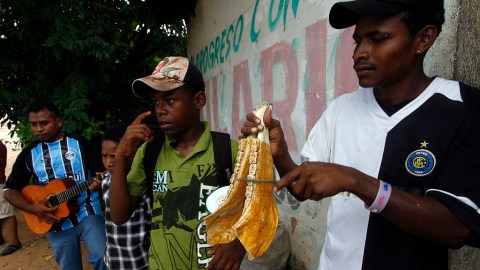Mexico Recognizes African-Descended Residents for First Time

The Mexican government has decided for the first time to identify its African-descended population through the national census. Previously, there had been no separate category for recognizing Afro-Mexicans, despite 15 years of advocacy on behalf of the Afro-Mexican community. Mexico is one of the final Latin American countries to recognize African-descended peoples as their own category on the Census; Chile is the only remaining regional nation that has yet to do so.
Most of Mexico’s African-descended population lives within the country’s coastal states, such as Guerrero. By and large they are descended from formerly enslaved Africans, many brought over to mine silver and work on sugar plantations. On the whole, Mexico’s African-descended population is smaller than that of many other Latin American and Caribbean countries, but counting those individuals definitely matters.
In order to address discrimination, you have to first be able to name it. The Afro-Mexican population is, on average, poorer and less educated than other Mexican populations, so by including them in the Census, there is finally a chance to know the extent of the problem and start to come up with solid solutions. New affirmative action policies and anti-discrimination measures target Afro-Mexicans to help even the playing field of opportunity.
So why did it take so long for Mexico to recognize Afro-Latinos in the first place? Well, some of it might have to do with the Mexican identity of “mestizaje,” which sees Mexicans as a combination of indigenous and colonial roots. By itself, this category doesn’t leave much room for the identities of African descendants, and it ignores the role that slavery played in the country’s development.
Black Mexicans aren’t just a political issue for Mexico itself. They may have had an impact in building U.S. cities like Los Angeles, for example. And the long-minimized history of Afro-Mexicans has been highlighted in several museum exhibits. Hopefully unearthing more of the present-day context of Afro-Mexicans through the Mexican census will paint an even more detailed picture of this sub-population.
Image Credit: AFP / Stringer via Getty Images
**
Stefani is a writer and urban planner based in Oakland, CA. She holds a master’s in City and Regional Planning from UC Berkeley and a bachelor’s in Human Biology from Stanford University. In her free time, she is often found reading diverse literature, writing stories, or enjoying the outdoors. Follow her on Twitter: @stefanicox





